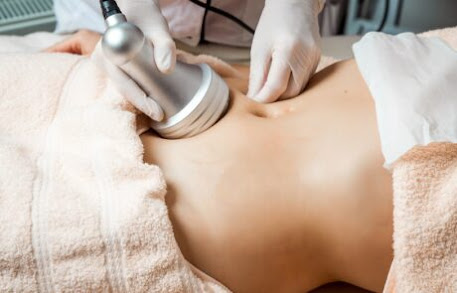What is Cavitation Treatment and How Can It Help You?
If you're looking to target stubborn fat deposits and reduce the appearance of cellulite, you may have heard of cavitation treatment. This non-invasive alternative to liposuction uses ultrasound waves to break down fat cells, resulting in a more contoured, toned appearance. In this blog post, we'll explore what cavitation treatment is, its benefits, what to expect during a session, potential risks and side effects, and more.
What is Cavitation Treatment?
Cavitation treatment is a non-invasive procedure that uses ultrasound waves to break down fat cells in targeted areas of the body, such as the abdomen, thighs, and arms. There are different types of cavitation treatments, including focused ultrasound, radiofrequency cavitation, and low-frequency ultrasound. During a treatment session, a handheld device is used to emit ultrasound waves that penetrate the skin and break down fat cells. The broken-down fat cells are then eliminated by the body's natural processes.
Benefits of Cavitation Treatment
Cavitation treatment offers several benefits, including its effectiveness in reducing the appearance of cellulite, contouring the body, and targeting stubborn fat deposits in areas that may be resistant to diet and exercise. Additionally, cavitation treatment is a non-invasive alternative to liposuction, meaning it requires no incisions or anesthesia and has minimal downtime and recovery.
What to Expect During a Cavitation Treatment Session
During a cavitation treatment session, you can expect to lie down comfortably while a handheld device is used to emit ultrasound waves on the targeted areas of your body. The treatment is painless and requires no anesthesia. Most sessions last between 30 and 60 minutes. To aid in the body's natural elimination of the broken-down fat cells, it's important to stay hydrated before and after the treatment.
Results and Aftercare
The results of cavitation treatment can vary based on the individual and the number of sessions undergone. Most patients report a reduction in the size and appearance of treated areas, with results becoming more noticeable after several sessions. To maximize the effectiveness of the treatment, it's important to follow aftercare instructions, such as staying hydrated, avoiding alcohol and caffeine, and engaging in light exercise to aid in the elimination of broken-down fat cells.
Potential Risks and Side Effects
While cavitation treatment is generally considered safe, there are potential risks and side effects to be aware of. These can include mild bruising, swelling, and temporary numbness in treated areas. To minimize the risk of complications, it's important to choose a qualified and experienced practitioner to perform the treatment.
Conclusion
Cavitation treatment can be an effective and non-invasive way to target stubborn fat deposits and reduce the appearance of cellulite. By using ultrasound waves to break down fat cells, the treatment offers several benefits over traditional liposuction, including minimal downtime and recovery. If you're considering
cavitation treatment, it's important to do your research and consult with a qualified practitioner to determine if it's right for you. With proper aftercare and multiple sessions, cavitation treatment can help you achieve the toned, contoured appearance you desire.
.png)



Comments
Post a Comment